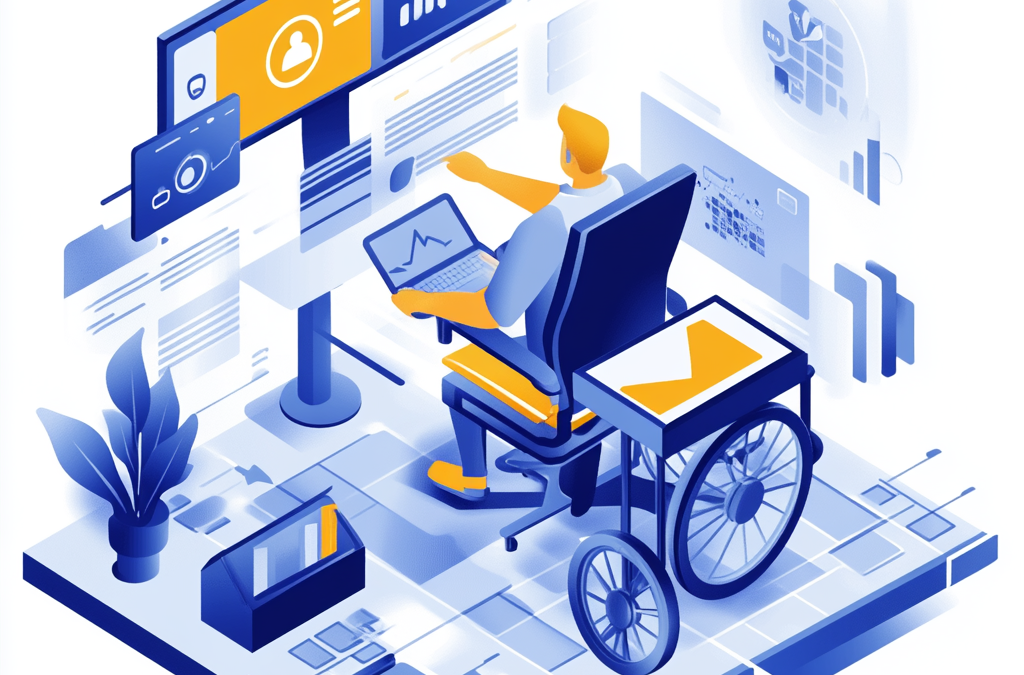In today’s fast-paced online world, digital accessibility is more than a buzzword—it’s a game-changer for inclusion and usability. You might wonder, what is digital accessibility, and why is digital accessibility important? In simple terms, digital accessibility ensures everyone, regardless of their abilities, can fully access and engage with websites, apps, and other digital platforms. It’s not just about meeting legal requirements; it’s about creating a world where no one feels left out online.
What Is Digital Accessibility and Why Does It Matter?
Digital accessibility ensures that people with disabilities can easily interact with digital content. This includes features like screen readers for visually impaired users, captions for videos, or keyboard navigation for those with mobility challenges. But it’s not just for those with disabilities! Have you ever tried reading a website in bright sunlight or struggled with a broken mouse? Accessibility features make those moments less frustrating for everyone.
So, why is digital accessibility necessary? It’s simple: the internet should be a place where everyone belongs. By prioritizing accessibility, you’re not just doing the right thing; you’re also expanding your audience and boosting user satisfaction. Inclusive design is smart design—it benefits all users, not just a specific group.
Three Pillars of Digital Access
To achieve true accessibility, it’s crucial to address the three key pillars of digital access: perceivability, operability, and usability.
- Perceivability: Information should be presented in ways that everyone can perceive. Think alt text for images or clear audio descriptions for videos.
- Operability: Make sure all functionalities can be operated easily, whether through a keyboard, voice commands, or assistive devices.
- Usability: Ensure your digital space is easy to navigate and understand. A clutter-free design with simple instructions goes a long way!
By focusing on these elements, you create an experience that works seamlessly for all users. And honestly, who doesn’t appreciate a well-designed, user-friendly website?
The Ripple Effect of Accessible Design
You may think accessibility only benefits a niche audience, but the truth is far more exciting. Accessible design creates a ripple effect of positive change. When your website is easy to navigate, it becomes a magnet for all users—those with disabilities and those without.
Take subtitles on videos as an example. Initially created for people with hearing impairments, captions have become popular with anyone who scrolls through content in noisy spaces or watches videos on mute. This is just one way digital accessibility services add value across the board.
Search engines also love accessible websites. Features like clear headings, descriptive alt texts, and straightforward navigation improve your SEO rankings. Yes, digital accessibility is not just good ethics—it’s good business! Google will reward your efforts with better visibility, driving more traffic to your site.
Why Prioritize Digital Accessibility Now?
Let’s face it: digital accessibility is no longer optional; it’s essential. Governments worldwide are implementing stricter accessibility laws to ensure inclusive digital spaces. By investing in accessibility now, you save yourself from future compliance headaches. More importantly, you show your commitment to equality, earning trust and loyalty from your audience.
Plus, accessibility boosts your brand image. When users see that you care about inclusivity, they’re more likely to recommend your services. It’s a win-win situation—you foster goodwill and grow your business simultaneously.
Getting Started with Digital Accessibility
You might feel overwhelmed thinking about where to begin, but starting small is okay. Audit your website with tools designed to detect accessibility issues. Focus on fixing high-impact areas like navigation, color contrast, and alt text for images. If you’re unsure, digital accessibility consultants can guide you through the process. Their expertise ensures that your website meets both user needs and legal standards.
Creating an inclusive digital experience doesn’t have to be complicated. It’s about empathy, understanding your users, and making thoughtful design choices. Whether it’s adding a simple “skip to content” link or ensuring videos have captions, every small effort makes a big difference.
Breaking Barriers Together
Digital accessibility is about breaking barriers and building bridges. It’s a journey towards making the online world welcoming for everyone. By embracing accessibility, you’re not just following a trend—you’re shaping a future where digital access is a universal right.
So, why is digital accessibility important? It’s about inclusion, opportunity, and connection. Let’s commit to breaking barriers, one website at a time. Because when everyone can access digital spaces, we all win.

